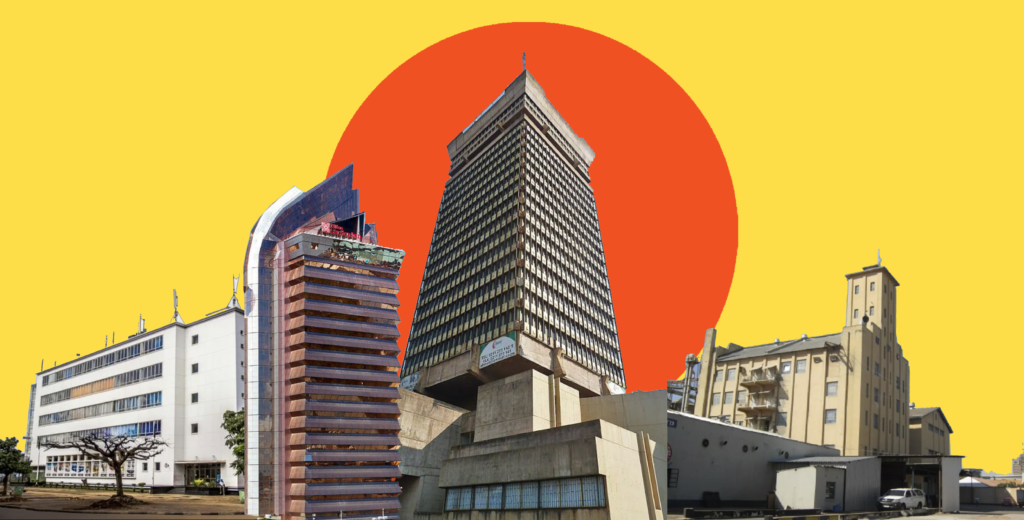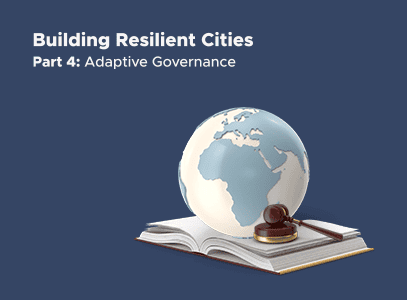One of my favorite movies is Alexandria… Why? A movie directed by the genius Youssef Chahine that portrays his early life in Alexandria, his love for cinema, and his journey to study it. I can’t tell you how many times I have cried during the final scene. Don’t worry. I won’t reveal the plot. One thing I also loved about the movie is its title; I love asking “WHY?” And I can almost guarantee that everyone on the CCI team loves asking “why” as well. A lot of our work involves asking why and finding the answer. Why are cities not performing well? Why do we still have slums in our cities? And how do we build better cities for the future?

The second week after I arrived in Lusaka (early 2022), a friend took me on a car ride to Cairo Road. They thought I would enjoy visiting a road called Cairo, although I grew up in Alexandria and don’t really like Cairo, but it’s okay. Also, they knew of my obsession with Modern Architecture and thought I would enjoy seeing some of Lusaka’s modern gems. It was cool. In fact, it was SO cool that the next day I went on a walking tour of Cairo Road by myself. Living in the “suburbs of Lusaka” is nice but can get b-o-r-i-n-g. Seeing a hustling and bustling street, with all those different economic activities and ugly modern buildings, was a breath of fresh modern air.
I was in love.
I was in love AND had a big why?
Why was it called Cairo Road?
I somehow assumed the answer. It was a post-independence pan-African name given to the street! The road name celebrated the role post-colonial Zambia played in the pan-African movement! After all there are also streets called Nasser and Suez in town. I had many other questions. When were all those modern brutalist buildings built? What was there before? Who designed them? Why do we only see these high-rise structures on this road?
But, most importantly, why the name Cairo Road???

CCI Zambia was launched in Lusaka in 2021 to both help create the ecosystem for charter cities in the whole of Sub-Saharan Africa (ambitious, eh?) and to support our affiliated projects and work with governments on the ground. Through research and technical assistance, we are hoping to help build New Cities better and empower them with the much-needed innovative governance tools to flourish. CCI also has a commitment to Lusaka, the city that hosts our regional office. We are committed to being involved in Lusaka’s urbanism and development and contribute to the conversation and work needed to ensure a better future for the city. From this more local focus, the Lusaka Urban Lab (LUL) initiative was born. LUL focuses on bringing relevant stakeholders together to discuss and find solutions for Lusaka’s urban challenges. Through LUL, CCI is providing the chance to learn from the development story of a globally important greenfield-garden city and asking how things could have been done better.

So, I went to Muchimba, a senior planner at the Ministry of Local Government and Rural Development, a ministry we work very closely with. I told her I wanted to know everything about Cairo Road and document it. This street is so cool, and no one is talking about it. I received an immediate and smiling ‘yes’, I sent her the project proposal, and we got to work. It took us months to allocate the history of the streets and the names of the architects. So many contradicting dates about when the buildings were established. We went through maps and books and spent hours in the national archives and Lusaka city council library. We interviewed historians, architects, and planners to try to answer those questions. I leave it to you to judge whether we were successful in that long and dusty endeavor. Read it here! We are quietly optimistic you will pass favorable judgment…

Back to our main question. Why Cairo Road? To my surprise the name Cairo Road was not part of the pan-Africanism project; in fact, it was far from. The Cairo Road name was officially declared in 1924, when Nasser was wearing short trousers and Zambian independence was a quixotic dream. It must have been part of the Cairo to Cape down Railway dream. Please check out Matthew McCartney’s paper or blog posts on Trains, it’s pretty cool. But no, we found no information to prove or deny that. We are still asking around – any answers in an email please!
The resulting Cairo Road publication has a brief but ambitious agenda, we explore the history of modernism, show how modern lines were used by colonial and post-colonial governments, and reveal the effects of the non-alignment movement design aesthetic on architecture in the region. Phew! The publication also explores the history of the street, how it was developed, and the economic activities that expanded (then contracted) across a turbulent century, including some fun and interesting facts that include a street ditch that lingered there for years.
The publication also includes a contribution by a multidisciplinary artist visiting Lusaka. Nada, originally from Cairo, created an ‘un-guided tour zine’ © that readers can utilize to explore other parts of the road, including the economic activities, the trees, the signs, and walking and accessibility.

We couldn’t just share the publication online! We wanted to scream our cornucopia of colorful history into the ears of every relevant stakeholder. That is why we dispensed with ministerial tradition and conducted a guided tour aimed at sharing the most relevant and interesting historical nuggets with those stakeholders. We invited everyone from the Zambia Institute of Architects to the Zambia Institute of Planners to the Ministry of Tourism and Arts to the Zambian High Commission for UNESCO, UNZA staff and students, and the local print and TV media. Lucky for us, everyone showed up, including the Minister of Local Government and Rural Development, the acting Minister of Tourism and Arts, and a representative from the Mayor’s office. Those unable to leave shops and offices followed our procession with bemused puzzled expressions.

That was our journey and those were the collaborations we established, the stakeholders we brought together, and the tour we led. I can tell you with a beaming smile that the project has only JUST begun. Stretching out ahead, like the Cairo visa itself, is a long road of conversations and convening stakeholders to implement solutions further to improve walkability, accessibility, and economic activities. History has a lot to teach us! Especially history in the shape of ugly modernist buildings.

Here at the end, I want to thank the CCI Zambia team for all their help and work on this project. Maggie for all the million calls and visits she has made, and all the invitations she created and Mwanda for having ministers on speed dial and all the support. Thanks to all the support from CCI Zambia, the DC research team and the Ministry of Local Governance and Rural Development, to make this project possible. If you are reading this and thinking about how to get involved, reach out to me at [email protected]. We are open to collaborations, ideas, and conversion on anything urban-related in Lusaka. And definitely keep an eye out for future projects and maybe another tour.







